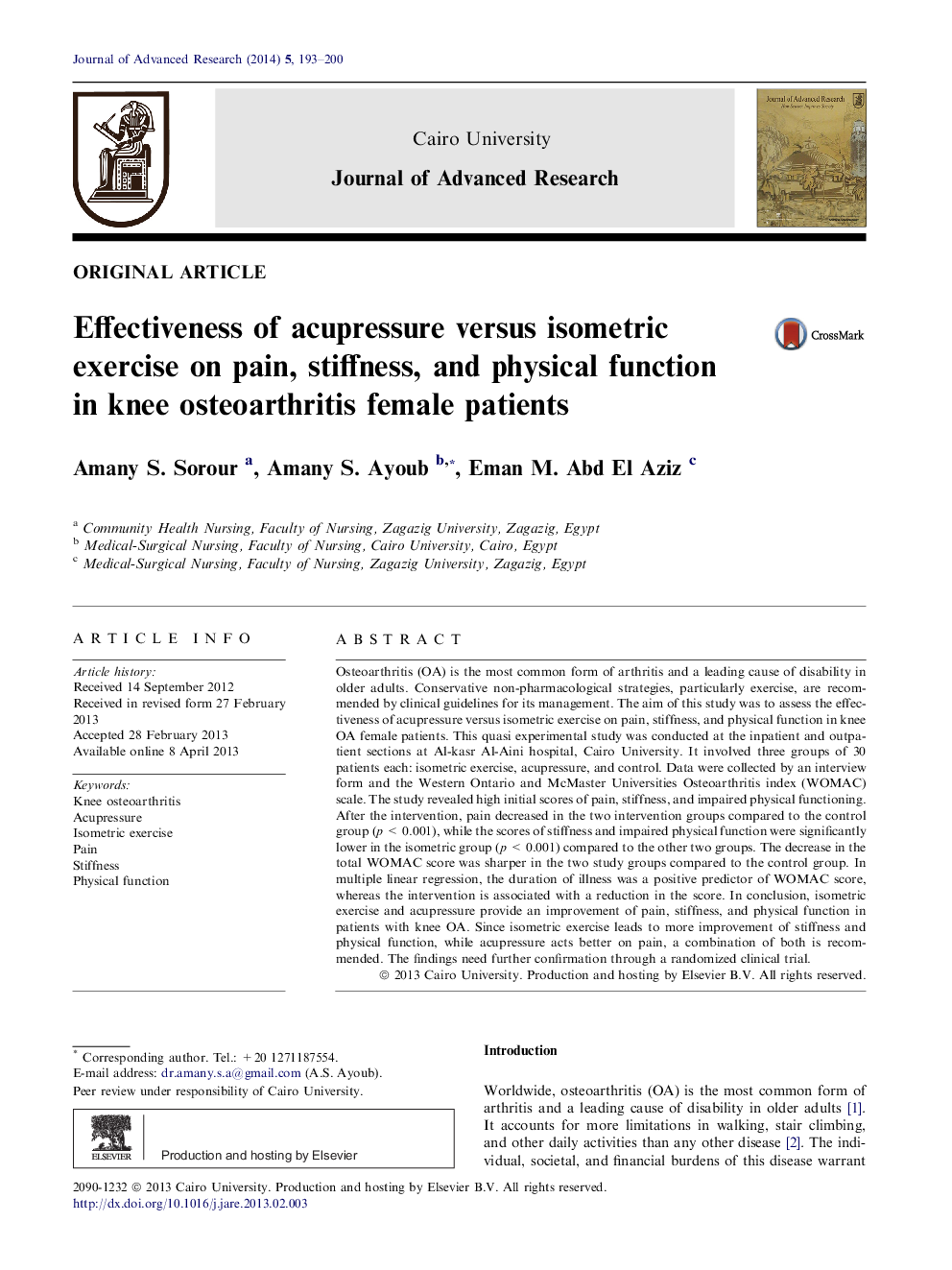| Article ID | Journal | Published Year | Pages | File Type |
|---|---|---|---|---|
| 826206 | Journal of Advanced Research | 2014 | 8 Pages |
Osteoarthritis (OA) is the most common form of arthritis and a leading cause of disability in older adults. Conservative non-pharmacological strategies, particularly exercise, are recommended by clinical guidelines for its management. The aim of this study was to assess the effectiveness of acupressure versus isometric exercise on pain, stiffness, and physical function in knee OA female patients. This quasi experimental study was conducted at the inpatient and outpatient sections at Al-kasr Al-Aini hospital, Cairo University. It involved three groups of 30 patients each: isometric exercise, acupressure, and control. Data were collected by an interview form and the Western Ontario and McMaster Universities Osteoarthritis index (WOMAC) scale. The study revealed high initial scores of pain, stiffness, and impaired physical functioning. After the intervention, pain decreased in the two intervention groups compared to the control group (p < 0.001), while the scores of stiffness and impaired physical function were significantly lower in the isometric group (p < 0.001) compared to the other two groups. The decrease in the total WOMAC score was sharper in the two study groups compared to the control group. In multiple linear regression, the duration of illness was a positive predictor of WOMAC score, whereas the intervention is associated with a reduction in the score. In conclusion, isometric exercise and acupressure provide an improvement of pain, stiffness, and physical function in patients with knee OA. Since isometric exercise leads to more improvement of stiffness and physical function, while acupressure acts better on pain, a combination of both is recommended. The findings need further confirmation through a randomized clinical trial.
